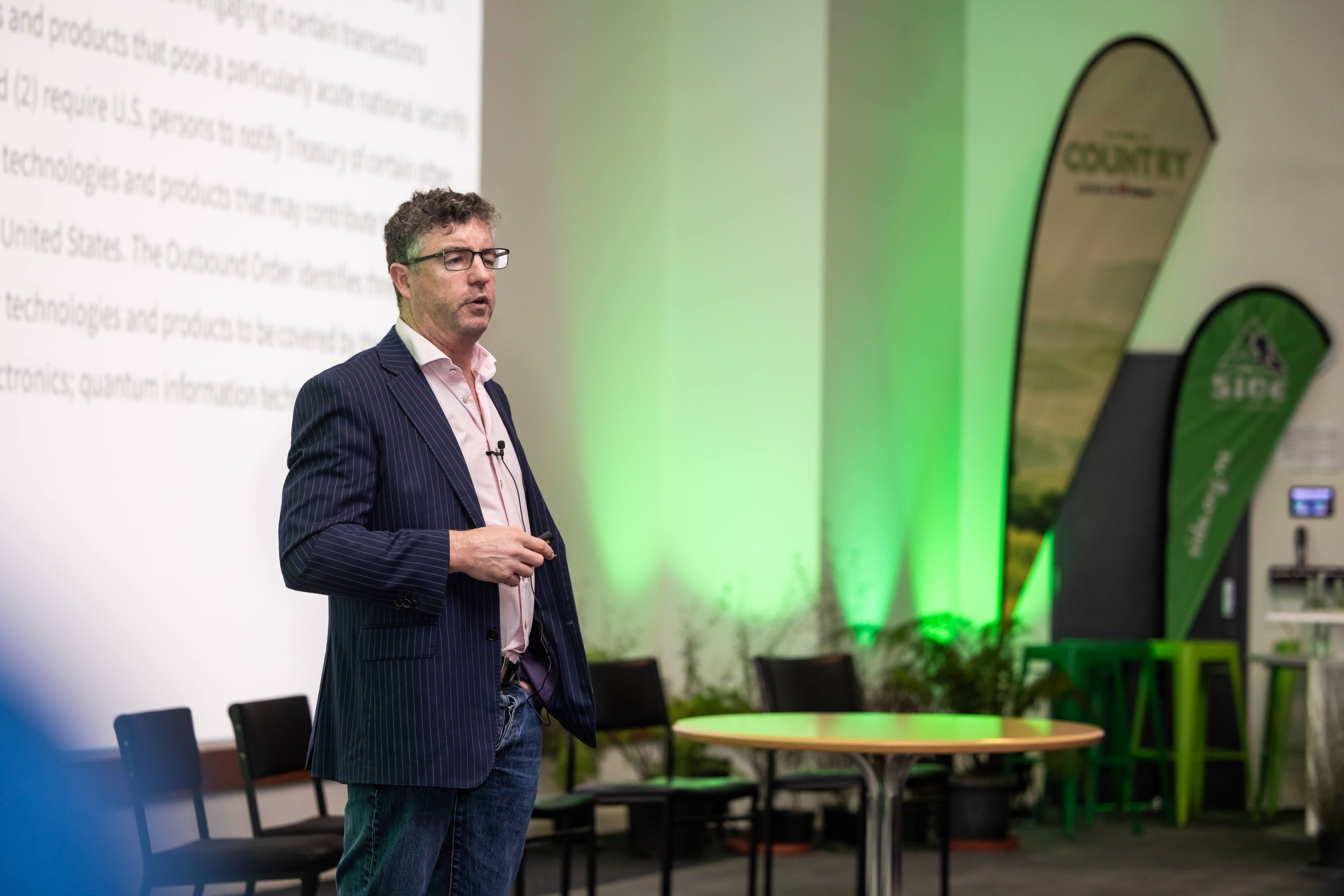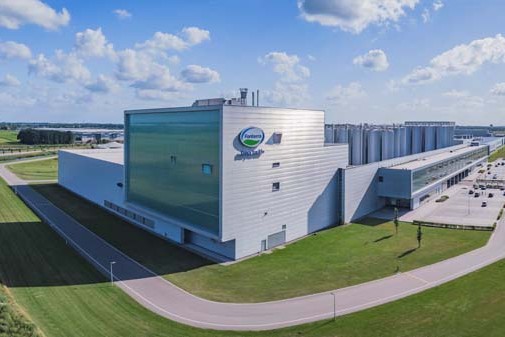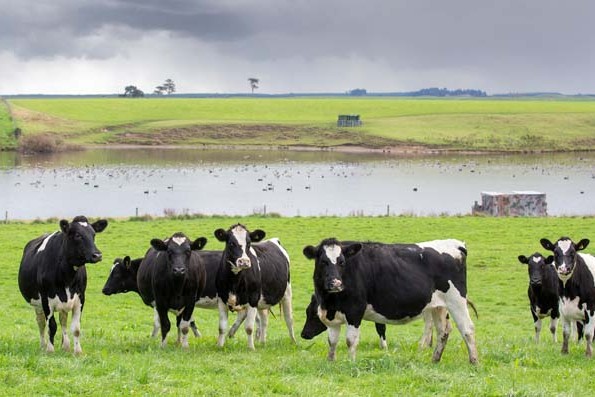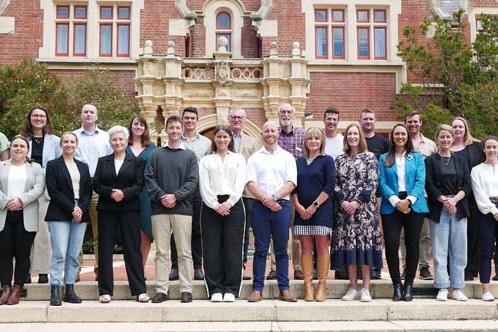More and more dairy farmers in the Netherlands and Belgium are discovering the benefits of participating in the milk futures market. Jelle Feenstra reports.
Contracts for 77 million kilograms of milk in 2020 were concluded by the Milk Trading Company (MTC), the co-operative that covers milk price risks on the futures market on behalf of livestock farmers in Belgium and the Netherlands.
That is double last year’s figure. The monthly price of 95% of this year’s milk has already been fixed at between 37 and 38.5 cents per kilo – about 38 cents on average. For the 220 participating dairy farmers – 141 from Flanders (Belgium) and 79 from the Netherlands – this appears to have been a very good move because milk prices are currently falling sharply as a result of the Corona virus crisis. In January, when MTC locked in prices on most of the milk, the expectation was that milk prices would rise this year.
NO INTEREST IN LOW PHYSICAL MILK PRICE
“I am afraid that MTC will make a lot of profit this year,” says consultant Niek Groot Wassink of initiator DLV Advies.
A board member of MTC, Groot Wassink explains being “afraid” to make a profit.
“Look, it is of course nice that dairy farmers have been able to fix part of their milk price at an annual level of 38 cents. It seems that the physical (actual market) milk price will probably not reach this level this year.
“But let it be clear that we prefer a high physical milk price for the entire sector, with a fixed price that is just a bit higher. That is better for the total dairy sector. And it ultimately also yields more benefits for the participants in the MTC because that price applies to only a portion of their milk.
“To clarify: in their first year of participation, dairy farmers can fix a maximum of 30% of their total milk volume on price; in the second year, that is 50%.”
DLV Belgium took the initiative to enter the European Energy Exchange (EEX) in Leipzig in 2017 under the name Milk Trading Company (MTC) with 47 dairy farmers. The EEX, a futures market for various products, began trading in dairy products in 2010.
Dirk Coucke, founder and general director of DLV Belgium, is the initiator of MTC.
“Offering prices in the future is interesting for big companies because it allows them to fix their purchase prices for milk and feed for a longer period of time and thus provide early assurance about their margins,” Coucke said.
Fluctuating milk prices and increasing price differences between milk processors gave DLV the idea to find way for dairy farmers to achieve more stable margins.
Success has meant the dairy farmers realised a profit of 1.78 cents/kg of milk in 2018; in 2019 a profit of 1.68 cents/kg was achieved. Both were net amounts adjusted for all costs incurred.
CARTE BLANCHE
Soon after the start in Flanders, DLV Belgium looked to expand into the Netherlands, collaborating with directors Herrold Lammertink and Niek Groot Wassink at DLV Advies. Groot Wassink is not only a DLV advisor specialising in financial management but also a dairy farmer, running a farm with his parents and brother.
He says that the MTC is a separate and fully independently operating body with a co-operative structure and members in both Belgium and the Netherlands.
Every two weeks, a delegation from both boards – five dairy farmers from the Netherlands and ten from Belgium – discuss the current market situation with dairy and feed analysts. In other words, two market experts in the fields of dairy and feed come with ready-made advice, and the delegated dairy farmers from both countries decide on whether to fix a price or not.
The board receives carte blanche from the members for decision making, not needing to seek feedback for every decision. The members will be kept informed of the fixed milk price, the current market situation and future expectations via a private website. The prices are always fixed between three and fifteen months in advance, called hedging in professional jargon.
A dairy farmer who wants to participate pays 5 euros/1000litres of milk in the first year of participation. From the second year this is 3 euros/1000litres of milk. A dairy farmer with a production of 1 million litres, who participates with 30% of his production, therefore pays €1,500 in the first year and €900 in the second year.
DLV, the analysts, and the brokers are paid from this money. A broker is a professional, who has the time and knowledge to monitor and estimate the market for the farmer as closely as possible and who concludes contracts on behalf of the farmers.
In addition, each participant must deposit a buffer of 8,000euros/100,000kg milk. For the example company mentioned above, that would be 24,000 euros. This is the working capital with which brokers trade.
Any profit is credited to the farmer member but a loss means that he would have to make additional payments because the buffer of 8,000 euros per 100,000 kilos of milk must be continuously maintained. This amount will remain in the member’s name and will be refunded when he leaves the futures market. For the buffer amount, the dairy farmer receives shares in the cooperative in proportion to his contributed milk.
PLUS OF €18,000 ON PHYSICAL MILK PRICE
MTC enters the futures market with this money. How does this work out in practice? In an example, in January 2020 MTC sold a future for butter and milk powder at a converted milk price of 38 cents in November 2020. If the actual milk price is then 32 cents, MTC will repurchase this future in November 2020 for 32 cents. The profit of 6 cents per kilo of milk goes to the joint kitty and is distributed to the 220 participating dairy farmers in proportion to the milk that has been brought in. The profit or loss sharing is determined monthly and is paid quarterly to each dairy farmer. Meanwhile, the participating dairy farmer continues to receive his regular milk money through his own milk factory. All his milk will also continue to go there – there is never physical delivery of even one litre of milk on the futures market.
Translating the 6 cents profit/kg milk in the above example across the whole of 2020 – not unthinkable based on the contracts concluded and the development of the dairy market – then the dairy farmer with 1 million litres of milk who fixed 300,000kg of milk on the futures market earns €18,000 annually from the futures trade – money that he would not have had without participation.
DOUBLING THE NUMBER OF PARTICIPANTS
The futures market does not suit every dairy farmer, said Groot Wassink.
“Trading on futures markets is the art of being satisfied with a certain price at a certain time. If you want to grab the top price on the physical market, you should not participate.”
Still, participation has several advantages. “Flattening the drops will improve the liquidity position. And experience shows that by fixing prices on the futures market on average a net profit gain of 1.50 to 2 cents/kg of milk is achieved. “
This year the result appears to be very positive as a result of the Coronavirus crisis. In fact, a “peak year” for the 220 participating dairy farmers “threatens” with perhaps 6 or 7 cents profit. Groot Wassink thinks the term “threatens” is correct.
“Again, because we as dairy farmers prefer to receive a high physical milk price and a fixed price that is a tad above that.”
Dairy farmers who apply this year will participate from 2021.
Stepping in during the current futures trading is not possible. Groot Wassink expects further growth, envisaging a possible doubling of the number of dairy farmers over the next two years.
“BETTER MISSED TOP THAN KISSED BOTTOM”
Harold Overmars is one of the 79 dairy farmers participating in MTC. Together with his parents, he runs a dairy farm producing 2 million kilos of milk in the Netherlands. In 2019 he participated in 10% of the milk pool, in 2020 it is 20%.
Overmars is very pleased with the DLV initiative. Last year, he earned an extra 1.68cents on 10% of the milk. For 2020, the milk price for 20% of their milk is hedged at price levels between 37 and 38.5 cents that were fixed in January when the milk price forecast was still rosy.
The conquering of the world by the Coronavirus changed the expectation and the milk price is now falling sharply.
“These kinds of unexpected events are also an important reason why I am with MTC. A milk price set until December gives peace of mind,” he says.
Overmars plans to transfer half of his milk pool to MTC eventually.
“The first few years have been a bit of an exploration, seeing how it goes. But I am very pleased with how it has gone so far. “
There may be times when he misses a top milk price of 43 cents and has to settle for 39 cents but he sees that as “part of the game”.
“Because if the milk price is 25 cents and there is a fixed price of 32 cents, we will be winning again. That’s why I say I’d rather have missed the top than kissed the bottom.”
Jelle Feenstra is a journalist from Pressagency Langs de Melkweg in the Netherlands.





